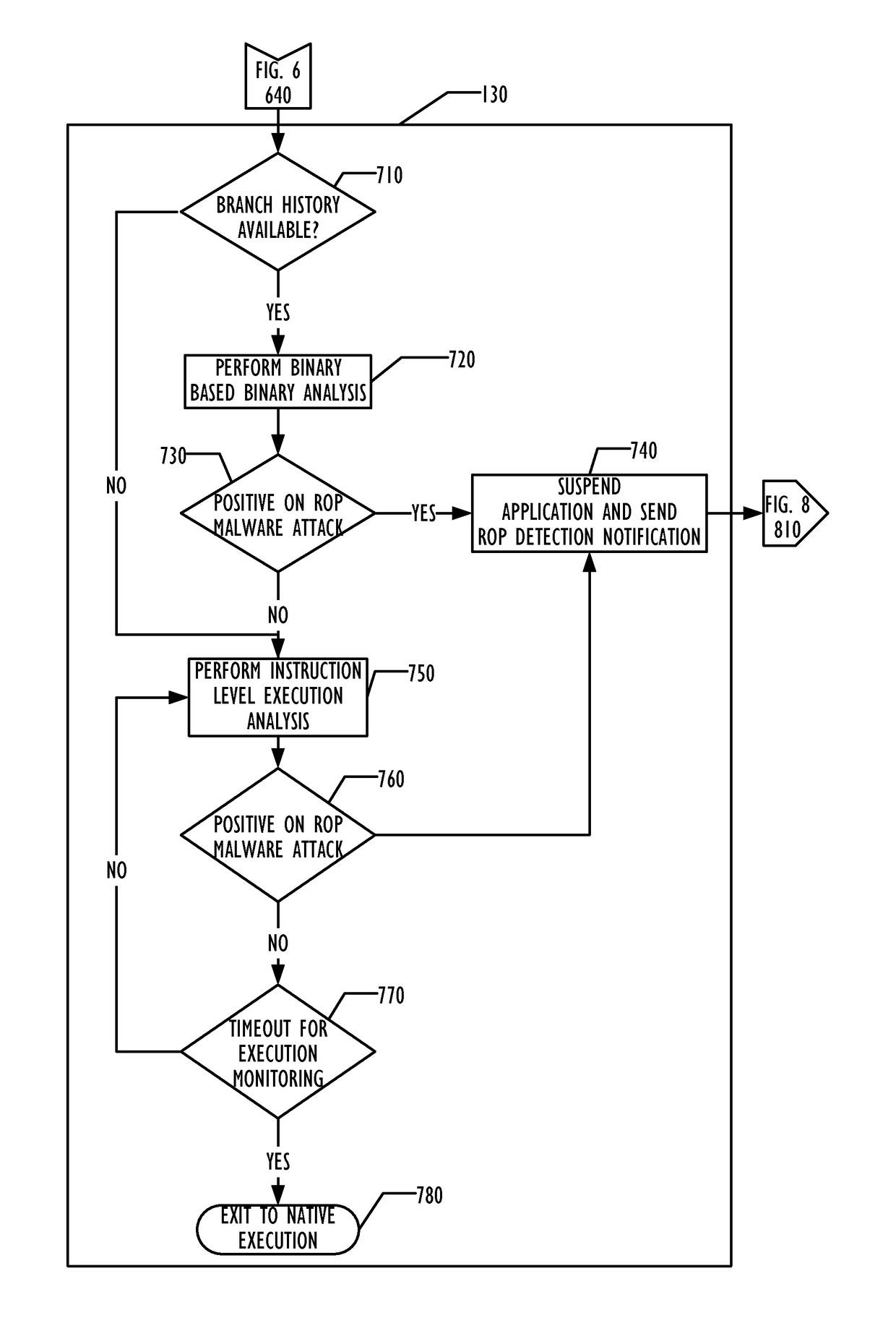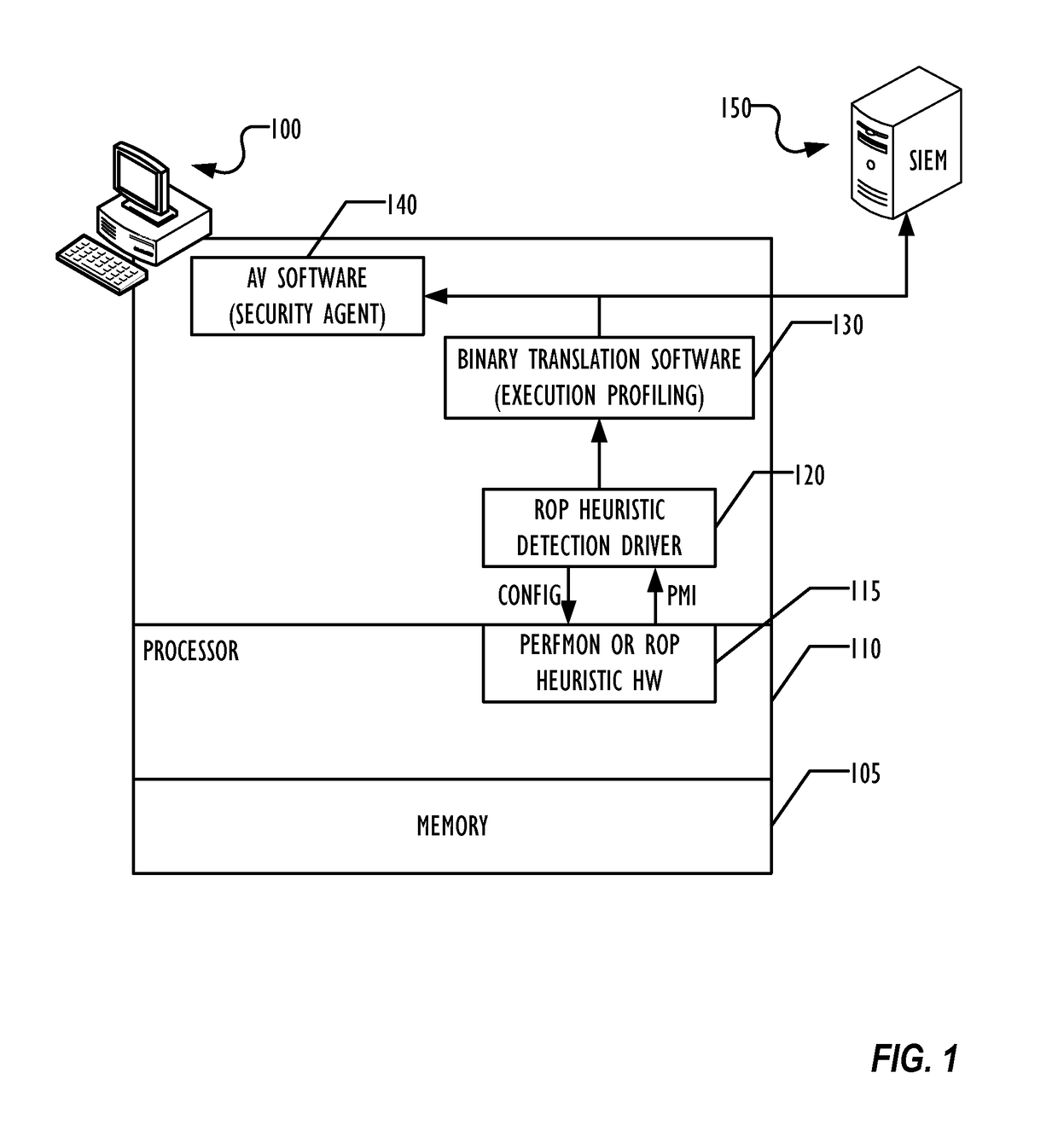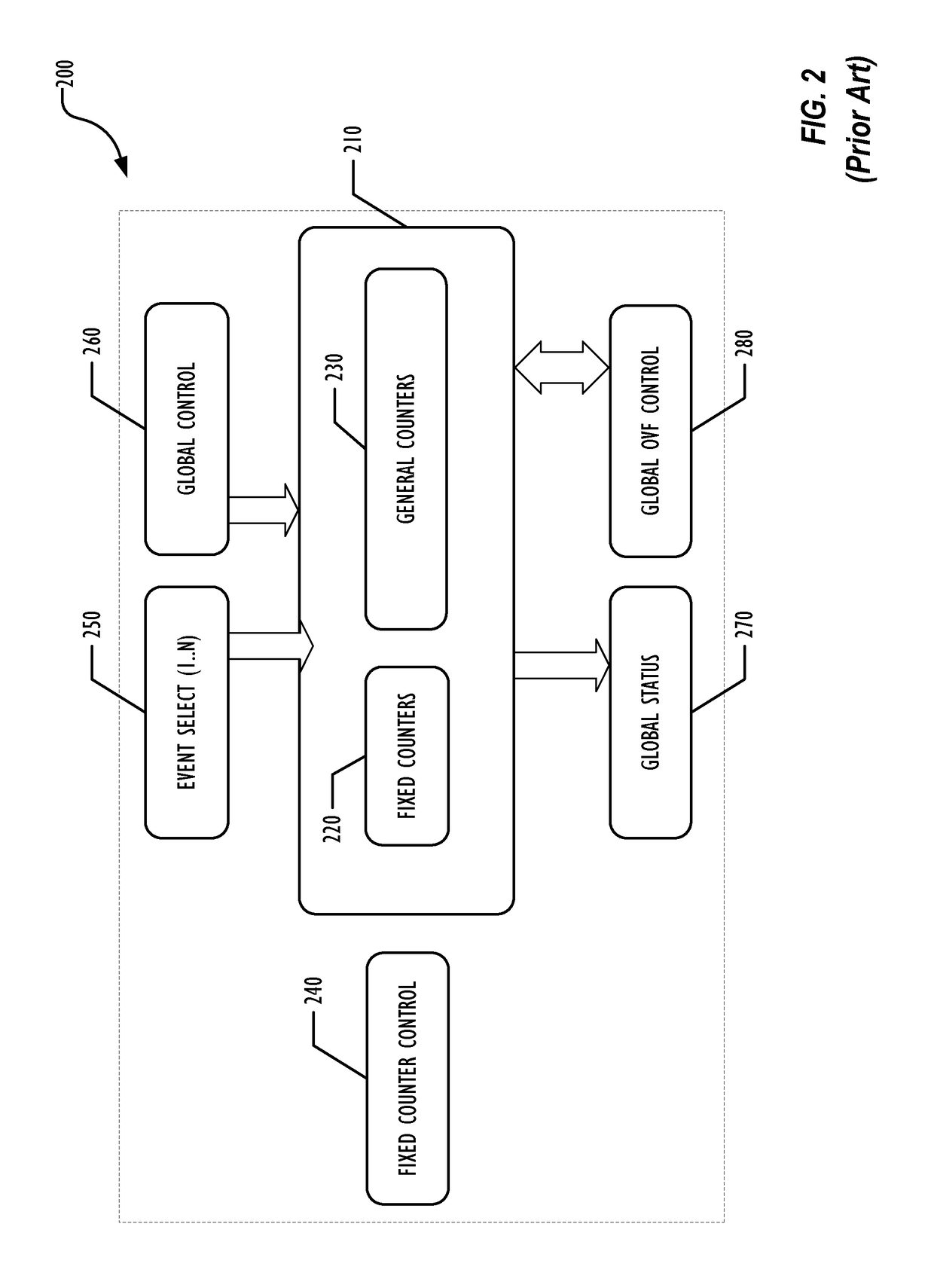Hardware heuristic-driven binary translation-based execution analysis for return-oriented programming malware detection
a technology of return-oriented programming and execution analysis, applied in the field of malware detection techniques, can solve the problems of complex detection inability to accurately predict the location of usable gadgets, and the growing threat of return-oriented programming exploits
- Summary
- Abstract
- Description
- Claims
- Application Information
AI Technical Summary
Benefits of technology
Problems solved by technology
Method used
Image
Examples
example 18
[0137]In Example 18 the subject matter of Example 17 optionally includes wherein detecting code flow anomalies comprises: detecting mispredicted branches.
[0138]In Example 19 the subject matter of Example 18 optionally includes wherein detecting code flow anomalies further comprises: detecting an imbalance between call and return instructions.
[0139]In Example 20 the subject matter of Example 17 optionally includes further comprising: suspending the application; and notifying an anti-malware software of the detected return-oriented programming exploit.
[0140]In Example 21 the subject matter of any of Examples 17-20 optionally includes wherein performing binary translation comprises: analyzing a branch history of the application.
[0141]In Example 22 the subject matter of any of Examples 17-20 optionally includes wherein performing binary translation comprises: performing instruction-level forward analysis of the application.
[0142]In Example 23 the subject matter of any of Examples 17-20 ...
PUM
 Login to View More
Login to View More Abstract
Description
Claims
Application Information
 Login to View More
Login to View More - R&D
- Intellectual Property
- Life Sciences
- Materials
- Tech Scout
- Unparalleled Data Quality
- Higher Quality Content
- 60% Fewer Hallucinations
Browse by: Latest US Patents, China's latest patents, Technical Efficacy Thesaurus, Application Domain, Technology Topic, Popular Technical Reports.
© 2025 PatSnap. All rights reserved.Legal|Privacy policy|Modern Slavery Act Transparency Statement|Sitemap|About US| Contact US: help@patsnap.com



